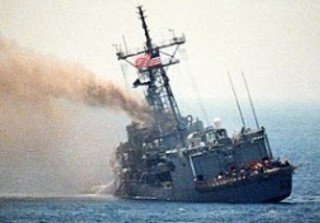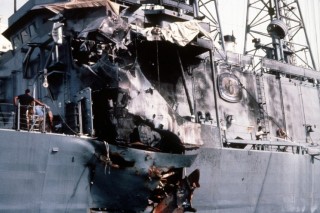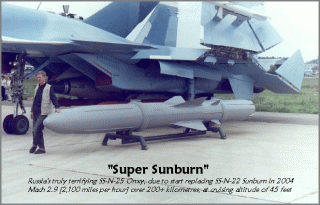
How vulnerable are U.S. Navy vessels to advanced anti-ship cruise missiles?
By John Keller for www.militaryaerospace.com


[youtube IUZu8bvxJs4]

So we have two allied warships sunk or crippled during the 1980s by the Exocet — a subsonic anti-ship missile with a 360-pound warhead. What happens when allied navies go up against much more formidable anti-ship missile threats?
I think this is what Navy leaders have in mind with this new project to develop an embarkable EW system that can be quickly installed and removed from Navy ships so a relative handful of systems can be deployed on ships going into harm’s way.
Navy leaders are known to be concerned with advanced radar-guided anti-ship missiles such as the Russian-made SS-N-22 Sunburn and SS-NX-26 Oniks, which may be operational with military forces in Iran, Syria, and other countries in the Middle East for use against U.S. and allied naval forces in and around the Eastern Mediterranean, Persian Gulf, and other vital waterways.
The Sunburn anti-ship missile can fly at three times the speed of sound, giving targeted vessels little time to react. It carries a 705-pound explosive warhead — twice the destructive payload of the Exocet and three times as fast.
The Oniks missile, more advanced than the Sunburn, can fly as fast as Mach 2.5, and carries a 661-pound warhead. Not only is this missile far faster and more powerful than the Exocet, but it may have the capability to maneuver on its terminal flight to its target, which could make defeating it difficult, if not impossible.

The Sunburn and Oniks missiles have sufficient destructive payloads to pose serious threats to large U.S. warships like aircraft carriers, which are at the heart of U.S. power-projection strategies around the world.
Now think about U.S. Navy ships operating in the tight confines of the Persian Gulf, where maneuver can be limited.
Iran, which has these advanced anti-ship cruise missiles, could launch them from rugged terrain near Gulf waters, giving U.S. warships only seconds to react.
If they were not to have reliable ways to defeat these advanced cruise missiles, the Gulf could become a nightmare killing field for front-line U.S. and allied warships. This must be keeping more than one Navy admiral up at night.
Editing: Jim W. Dean
______________________________________
ATTENTION READERS
We See The World From All Sides and Want YOU To Be Fully InformedIn fact, intentional disinformation is a disgraceful scourge in media today. So to assuage any possible errant incorrect information posted herein, we strongly encourage you to seek corroboration from other non-VT sources before forming an educated opinion.
About VT - Policies & Disclosures - Comment Policy



